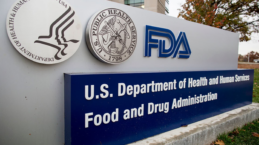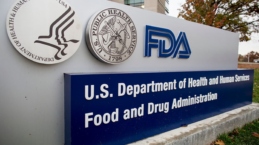

insights
Five Broad Implications for FDA’s Project Optimus: The Future of Oncology Trials is Here
Oncology drug development is different from most drug development programs in other therapeutic areas, or at least, has been historically. While most drugs are evaluated in randomized dose-ranging trials prior to pursuing pivotal clinical studies, oncology drug development, by comparison, is often accelerated due to the life-threatening nature of most cancers and the inherent toxicity associated with historical anticancer therapeutics like chemotherapy or radiation therapy. Consequently, dose-ranging studies in oncology are largely focused on identifying the maximum tolerated dose (MTD) based primarily on tolerability and performed only in Phase 1 trials; additional studies intended to support a broad understanding of the impact of different doses on efficacy and toxicity are then deferred until postmarketing. The United States Food and Drug Administration (FDA) is now taking aim at revising this long-standing paradigm via Project Optimus.
With the advent of molecular medicine, drug developers have begun to elucidate the genetic underpinnings of many cancers. This has produced targeted therapies offering marked improvements in safety and efficacy in comparison to chemotherapy. An unforeseen consequence of the success of these targeted therapies over the last decade is the exposure of patients to oncology drugs (and concomitant medications) for much longer periods of time, which increases the likelihood of long-term risks for the patients.
As duration of therapy increases, the need to find the optimal dose becomes increasingly critical and FDA has taken notice. Project Optimus, a new initiative from the Oncology Center of Excellence (OCE) within the FDA, was launched to reform the dose optimization and dose selection paradigm in oncology drug development. The project’s mission is to educate, innovate, and collaborate with companies, academia, professional societies, regulatory authorities, and patients to establish a dosage that maximizes not only efficacy, but also safety and tolerability. The project aims for drug developers to discuss dose finding and dose optimization with FDA oncology review divisions early in their development program, well before moving to later stage pivotal trials.
Over the past few years, we have watched FDA become increasingly vocal about the need to overhaul the current clinical development paradigm for targeted anticancer therapeutics. The industry has received regularly occurring dose optimization recommendations in early-stage feedback for various new molecular entities entering the clinic. The OCE finally released a long-awaited draft guidance in January 2023 entitled, Optimizing the Dosage of Human Prescription Drugs and Biological Products for the Treatment of Oncologic Diseases, Guidance for Industry, to help sponsors focus on defining their dosage optimization strategies earlier. An analysis presented in the 2023 Scientific Report by the Friends of Cancer Research showed that a lot still needs to be done to support premarket dose optimization since, in many cases over the past decade, the FDA has allowed for dosing issues to be a part of a sponsor’s postmarketing requirement. This has been done primarily to avoid any delays in getting drugs to fulfill unmet medical needs but begs the question of what the best time for sponsors is to initiate dosing-related questions with the FDA.
Our continuing analysis of the dose-optimization landscape over the last years leads us to five common themes we believe will help sponsors prepare for these changes.
Theme 1: This Practice May Be New to Oncology Trials, But It’s Not New to Industry
The Project Optimus initiative can significantly redefine the approach to clinical development for targeted oncology products, but the need for randomized studies to evaluate multiple doses prior to pivotal trials is not a new concept. Development in other therapeutic areas have long been following this practice. Following dose-escalation, multiple (at least two) doses should be selected based on exposure and pharmacodynamic markers, as appropriate, for evaluation in a randomized study. This may result in the design of a randomized Phase 2 trial or a more flexible seamless Phase 1/2 trial with two or three doses compared to an active control. These randomized studies are critical to the further characterization of exposure-response analyses and safety assessments to inform dose selection for subsequent pivotal trials. Sponsors may learn from dose optimization success stories in other therapeutic areas, including rare disease indications.
When looking specifically for precedent in the oncology space, one of the first companies to have directly experienced Project Optimus was Amgen. During approval of Lumakras™ for the treatment of Non-small Cell Lung Cancer with a KRAS G12C mutation, Amgen agreed with the FDA’s proposed post-marketing requirement to conduct a randomized clinical trial to compare the safety and efficacy of Lumakras™ at the approved dose of 960 mg once daily versus a lower daily dose of the drug (240mg once daily dose). Kura Oncology announced in early 2021 that it would also run a new dose-optimization trial for the acute myeloid leukemia therapy KO-539. Since the release of the draft guidance in January 2023, comments regarding dose selection and optimization have become a routine topic of conversation with the FDA during early interactions like the Pre-IND meeting.
Theme 2: Become Your Product’s Expert to Make the Best Dosing Decisions Early On
This theme applies to all drug developers irrespective of therapeutic area, but sponsors of oncology products should pay close attention to the preclinical activities that are intended to inform identification of an initial dose and any additional data that might facilitate efficient dose optimization in later development. Appropriately characterizing a product’s therapeutic index based on biological activity and toxicity, as derived from preclinical studies, is essential to making the right dosing decisions.
Sponsors should also remain aware of product and/or class-specific concerns at an early stage. For example, kinase inhibitors often exhibit poor aqueous solubility. So, thoroughly characterizing potential risks related to food-effect in preclinical studies may identify a need for early evaluation of the risks and the corresponding impact on selecting the recommended Phase 2 dose (RP2D) in the clinical trial design.
Theme 3: A Pre-IND Meeting is Not Too Early to Discuss Dose-Range Findings
After performing preclinical work and establishing necessary data, sponsors should consider leveraging discussions with the FDA to align on a plan for dose-range findings during their pre-Investigational New Drug Application meeting (PIND). A PIND is never too early to have such discussions. As mentioned above, discussions around dose selection and optimization during the Pre-IND meeting are more routine than the exception, with the expectation these early interactions can help sponsors design appropriate studies during early development. Sponsors are highly recommended to utilize the PIND meeting to align with the FDA on the clinical design for their first-in-human (FIH) study, so their trial design appropriately accommodates efficient dose optimization.
For example, Phase 1 trials should include adequate pharmacokinetic (PK) sampling to enable a clear determination of the PK properties of the drug and preliminary characterization of dose-exposure relationships. When feasible and appropriate, pharmacodynamic (PD) endpoints should be incorporated to determine the drug exposure that results in inhibition of the drug target.1
In our experience with recent PIND interactions for investigational oncology products, we are routinely noticing language warning sponsors of submitting inadequately justified doses, coupled with advice toward discussing a proposed dosage optimization strategy with FDA as early as possible. There have been indications in PIND feedback that an inability to justify dosages may result in a clinical hold of the IND due to concern of insufficient characterization of safety to assess the risks of exposing a large number of patients to the IND. Sponsors should respond appropriately to this type of feedback and prospectively align with FDA on trial design in order to de-risk the subsequent IND submission.
Theme 4: Thoughtful Design is Paramount to Clinical Success and Patient Safety
We are increasingly seeing recommendations that sponsors optimize their dosing regimen in advance of commencing registrational trials. The idea that randomized Phase 2 designs may be useful to provide information regarding an optimal dose(s) is becoming predominant in PIND feedback and there is recommendation to pool clinical PK, PD, efficacy, and safety data, as well as nonclinical pharmacology data, to conduct integrated dose-response and exposure-response analyses for dose optimization.
The timing of optimal dose identification is being specified in the FDA’s feedback, but since dose escalation trials are limited in sample size and frequently do not identify an optimal dosage, the FDA is encouraging sponsors to evaluate different dosages of oncology products early in clinical development as well as to evaluate clinical data from dose-finding cohorts over a wide dosage range to characterize the dose-response relationships for activity and safety and to support the optimal dosage(s) for further clinical development. Any of these options should be discussed with the FDA as soon as possible.
Consistent with other clinical development initiatives, the FDA is also eager to incorporate patient-reported outcomes (PROs) to guide dose optimization and selection. Although it’s unclear how actionable PROs may be in small, early-stage oncology studies, the goal appears to be better characterization of tolerability over time.
Theme 5: This Revision Will Be Better for Patients and Industry
While patient safety is the driving factor behind Project Optimus, FDA still recognizes the importance of accessibility for patients. FDA has signaled that randomized dose-finding studies could be designed to allow for crossover such that the trial could be continued as a single group trial including participants from the randomized study who were being treated with the selected dose.2 Such an approach may afford improved dose optimization without significantly compromising overall development timelines.
As oncology companies continue to develop more effective therapies, patients remain on treatment for longer durations and minimization of long-term potential safety effects becomes increasingly important. Therefore, dose-finding and optimization in oncology can no longer wait until post-marketing and must be integrated into the early-stage clinical development plan. Given the heterogeneity of cancer patient populations, earlier assessments of exposure-response data may improve safety and efficacy profiles across subpopulations within one disease.
Ultimately, this is the optimization that FDA is seeking. But this change doesn’t necessarily result in longer development timelines – a common industry concern. Something is always learned from exploring extra doses and, as stated before, reviewing preclinical data, and sharing early findings with the FDA as soon as possible can help to optimize a trial’s timelines. Alternatively, performing thorough dose optimization in earlier stages of development may help sponsors to discontinue development for drugs that are not commercially viable.
Conclusion
As these themes continue to emerge and the FDA further refines its vision, it will be critical for sponsors to collaborate with FDA and to remain nimble while the framework for Project Optimus comes into focus. The January 2023 guidance is full of insights and a strong step in a positive direction for patients and industry. With patients at the center of drug development, and with forward thinking and flexibility in trial design, the FDA is confident that oncology treatments will be improved and will work alongside sponsors to align on best practices.
**
If you have any questions about your oncology clinical development plan and regulatory strategy, contact Halloran.
We are ready to partner when you are.
References:
- Friends of Cancer Research. Optimizing Dosing in Oncology Drug Development: Friends of Cancer Research Annual Meeting 2021. Accessed 20 February 2024. https://friendsofcancerresearch.org/wp-content/uploads/Optimizing_Dosing_in_Oncology_Drug_Development.pdf
- Shah M, Rahman A, Theoret MR, Pazdur R. The Drug-Dosing Conundrum in Oncology – When Less is More. N Engl J Med. 2021; 385:1445-1447
- FDA. Optimizing the dosage of Human Prescription Drugs and Biological Products for the Treatment of Oncologic Diseases, Draft Guidance for Industry. January 2023. Accessed 20 February 2024. https://www.fda.gov/media/164555/download
- Friends of Cancer Research. 2023 Scientific Report: Regulatory Advancement for Patients. Accessed 20 February 2024. https://friendsofcancerresearch.org/wp-content/uploads/Friends-Scientific-Report_2023.pdf




